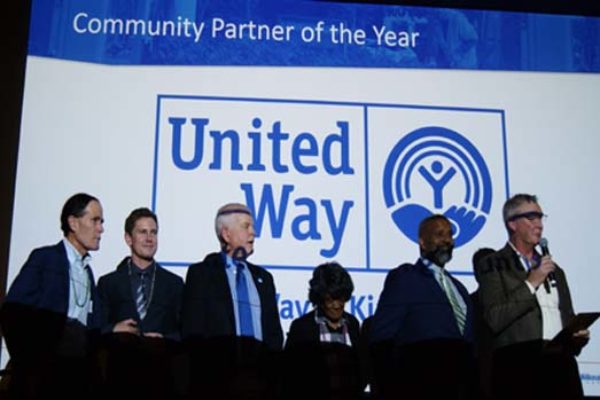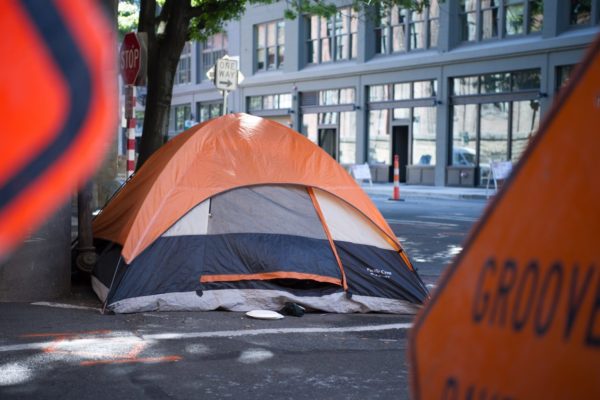Housing + Income Needed to End Homelessness
Lauren McGowan, Director of Family Stability for United Way of King County, shares results from the recent point in time homelessness count, and what we’re doing to help people and families achieve safe housing.
Last week, our community announced the results of the annual point in time count of people experiencing homelessness in King County. In January I participated in the count with my guide Richard – one of the 11,643 people without a permanent place to call home.
The number is incredibly heartbreaking, but it’s the lack of surprise and outrage that is haunting me. Maybe people aren’t surprised because most people who live or work in Seattle don’t need this report to know that the number of people living without a roof overhead is growing. Most of us run across people experiencing homeless every day – a visible reminder of the pain, trauma, and grief that homelessness causes. That should outrage us – these 11,643 men, women, children, veterans and seniors are our neighbors who deserve a consistent place to rest, shower, and dream.
There are so many people working hard to solve the homeless crisis by following the recommendations from national experts. As a result, 7,500 households moved from homeless to housed in 2016. That’s 50% more than a few years ago. Our Streets to Home program has helped over 500 avoid the shelter system and move into housing.
There’s a lot to be hopeful about. But it’s not enough. The problem is growing, and we just aren’t keeping up. We need to be bolder and faster to accelerate our progress.
Unlike some social issues where the causes and solutions are controversial, we know what the solution to homelessness is – HOUSING!
Despite housing more people than ever, despite having a plan, despite strong collaboration and accountability, we are failing to provide a basic human need to our most vulnerable – a roof over head.
Here is what we need to do.
1. House people more quickly.
Rapid Re-housing isn’t so rapid for most people. Last week Erica Barnett pointed out that 61 percent of people in the program are able to find housing within four months. That’s an awful long time to remain homeless. We need to move people who have a subsidy into housing much more quickly. This means dedicating more staff to finding housing, engaging more property owners, and looking at alternative housing models. It also means that more people will need to double up with roommates and live further outside the urban centers. This should be a top priority for funders and providers.
2. Connect People to Jobs
We need to do more to increase income and adopt a “Jobs First” approach to complement our “Housing First” philosophy. While employment alone will not solve homelessness and should not be an excuse for not housing people, it it is an important tool for keeping people in their homes and makes Rapid Re-housing programs more successful. That’s why our Jobs Connect program is expanding this year to connect 1,000 people experiencing homelessness to jobs.
3. Ramp Up Efforts to Prevent Homelessness
People of color are disproportionately experiencing homelessness. An estimated 55% of individuals experiencing homelessness in Seattle/King County identified as people of color. Twenty-nine percent of the county’s homeless population is black, compared with 6 percent of the county’s total population. Fourteen percent of homeless people in the county are Hispanic or Latino, compared with 9 percent of the population. We will not solve this unless we prevent people of color from becoming homeless in the first place. We need a comprehensive strategy for working with local systems – like hospitals, Foster Care and jails – to prevent people from being discharged into homelessness. We also need to use data to provide emergency assistance and legal services to people that are at risk of eviction.
4. Advocate For Affordable Housing
Seattle is the fastest growing city in the nation with more than 1,000 people moving here every week. As a result, rents rose 57% in King County in the past six years. We need to advocate at the local, state and federal level for more affordable housing.
5. Invest More Money
We have a plan for ending homelessness – now we need the resources to implement it. We know that housing people is way less expensive that having them remain on the streets. And while our community already makes significant investments in addressing homelessness – we don’t have enough to keep up with cuts from the federal budget and the growing crisis. We also need more unrestricted funding from philanthropy to help people get housing and jobs.
We have our work cut out for us, but anything less than solving this crisis is unacceptable.





Comments